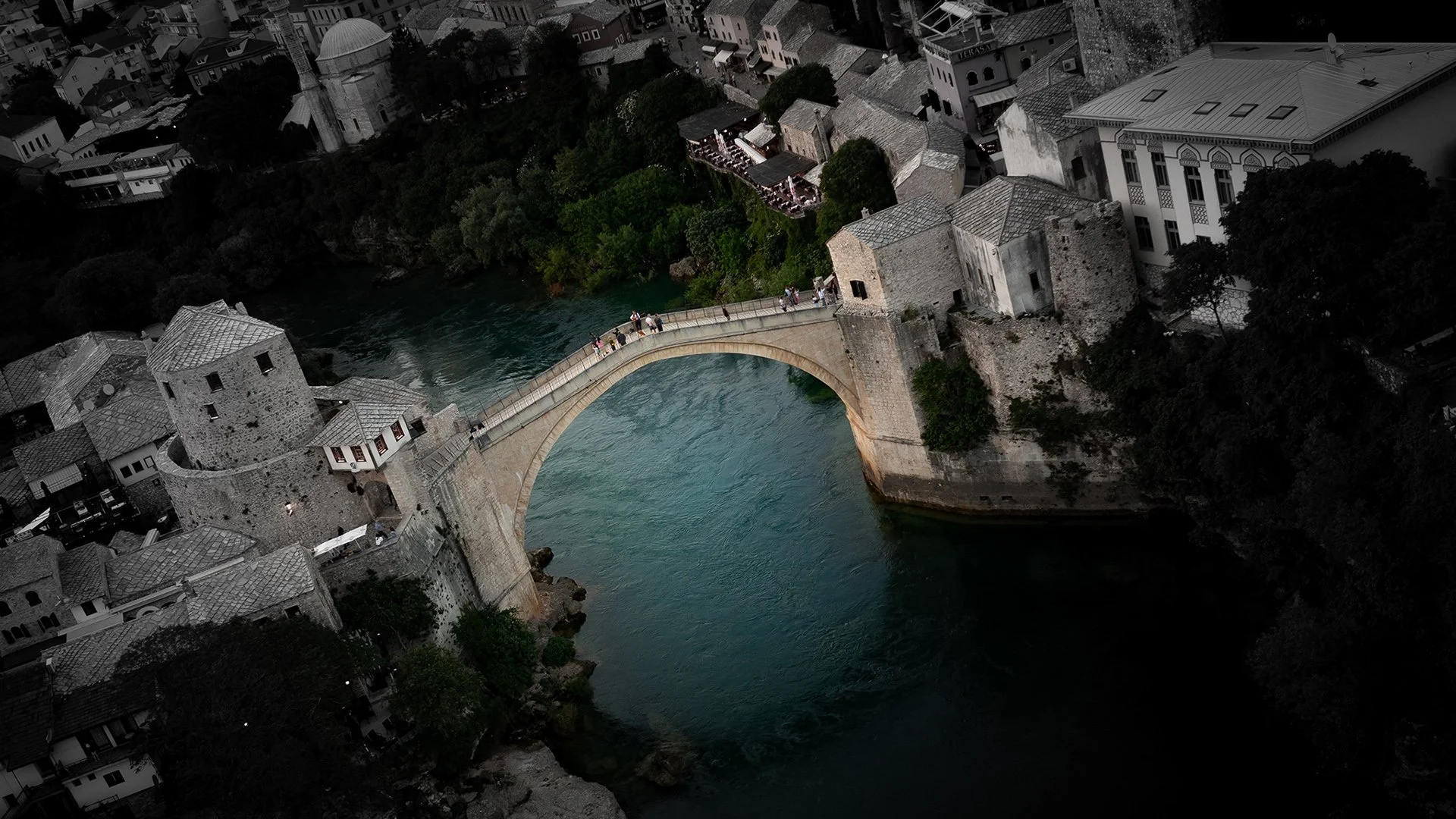
THE OLD BRIDGE IN MOSTAR
Author: Prof. Aida Idrizbegović Zgonić, PhD, Faculty of Architecture of University of Sarajevo • Photo & video: Mirza Hasanefendić
Through the story of the Old Bridge in Mostar, it is possible to perceive the complete human civilization. From connecting trade routes, building skills, the pursuit of beauty, destruction and re-emergence as a symbol of the continuity of life in Bosnia and Herzegovina.
Built in 1566, its builder Mimar Hajrudin, synthesizes natural surroundings with, artistic and technical skills, making an elegant stone arch (load-bearing structure) 79-84 cm high, bridging the span of 28.70 meters. There are other single-arched bridges, but none has such a thin arch directly set into the bedrock on the banks of the river. The builder uses innovative techniques such as hollow internal construction, slightly pointed arch, and using a special local stone - tenelija. Tenelia is an exceptional stone, easy to cut and shape, and even becomes harder over time due to the absorption of lime mortar. It was extracted from the original quarry; this type of stone was crucial for the construction success of the Old Bridge. This type of limestone is extremely rare and specific to the region around Mostar.
It was inscribed on the World Heritage List (WHL UNESCO) in 2005 (together with the surrounding buildings) under criterion (vi), which refers to its symbolic value.“ With the renaissance of the Old Bridge and its surroundings, the symbolic value of the city of Mostar coexistence of communities of different ethnic and religious backgrounds - has been reinforced and strengthened, underlining the unlimited efforts of human solidarity for peace and powerful co-operation in the face of overwhelming catastrophes.”
"The bridge, with all its beauty and grace, was built to outlive us, as a symbol of eternity. Precisely because it is the product of individual creativity and collective experience, it transcends our individual destiny."
The Old Bridge acts as a structure that naturally arose from the environment in which it is located, and with its reconstruction completed in 2004 it has again become a material substance of the continuity of civilization, a testament to all historical architectural layers and events, culture, collective memory and image of the city.
References:
Čelić, Džemal i Mujezinović, Mehmed (1969) Stari mostovi u Bosni i Hercegovini (Old Bridges in BiH), Sarajevo: Biblioteka kulturno nasljeđe (Cultural heritage library), Veselin Masleša, str. 185.
Pasić, Amir (2005), „Celebrating Mostar“, Mostar: Publisher Infinitinet, str.150
IGH Zagreb: http://www.igh.ba/pdf/Radovi/Specificnosti%20kamena%20Tenelija%20i%20Miljevina.pdf
UNESCO WHL Inscription justification: Criterion iv: http://whc.unesco.org/en/list/946
Drakulić, S. „FALLING DOWN, A Mostar Bridge Elegy, 1993 https://lists.h-net.org/cgi-bin/logbrowse.pl?trx=vx&list=h-islamart&month=0811&week=b&msg=ltVciwbhxCCxvN1//tgsag&user=&pw=









